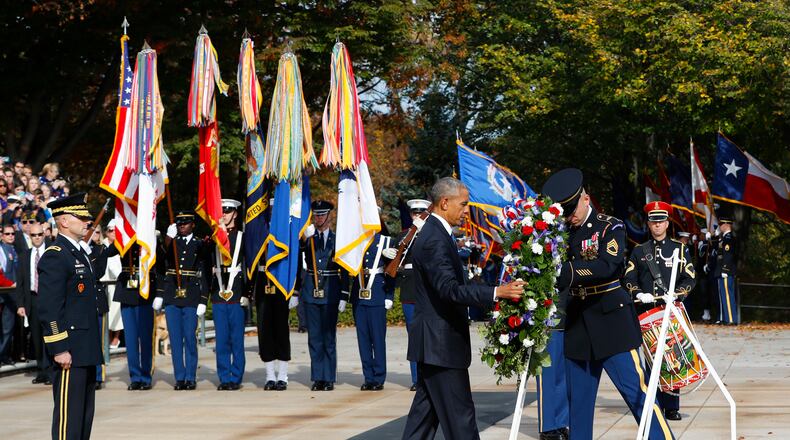The country on Friday will celebrate Veterans Day, a day Congress set aside to “be commemorated with thanksgiving and prayer and exercises designed to perpetuate peace through good will and mutual understanding between nations.”
Here are five things to know about the day and its origins:
The date is tied to World War I: In 1919, President Woodrow Wilson asked that Nov. 11, the first anniversary of the armistice of World War I, be recognized by U.S. citizens as a day of "solemn pride."
It was a holiday in many states before it was a national holiday. In a 1926 resolution, Congress noted that Nov. 11 was a legal holiday in 27 states. It requested that the president "issue a proclamation calling upon the officials to display the flag of the United States on all Government buildings on November 11 and inviting the people of the United States to observe the day in schools and churches, or other suitable places, with appropriate ceremonies of friendly relations with all other peoples."
At one point, the date changed as well. In 1968, a bill meant to help federal employees celebrate holidays with three-day weekends passed to make four holidays, including Veterans Day, fall on Mondays (the others were Washington's birthday, Memorial Day and Columbus Day). But in 1971, the first year the law was applied (on Oct. 25), there was confusion about whether it was a holiday. In 1978, Veterans Day was returned to Nov. 11.
A committee oversees national planning. That committee was formed by a 1954 proclamation and, in part, chooses sites of regional observances and hosts a national ceremony at Arlington National Cemetery.
About the Author
The Latest
Featured


